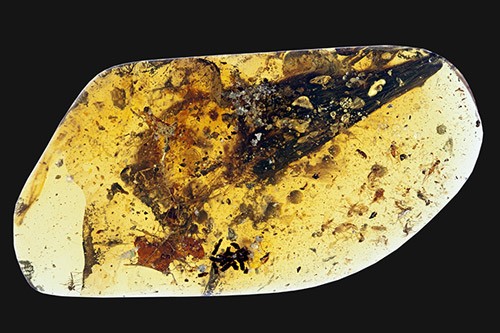Another incredible amber discovery was unearthed, as two bird wings were preserved inside this precious tree resin, providing important clues about how birds that lived among dinosaurs. These new discoveries where uncovered in Myanmar from baby birds that became unfortunately trapped in this tropical tree resin some 99 million years ago.
Scientists also reveal the amazing details and pristine condition that preserved the feathers that included original colorations and even spots and stripes from avian plumage. The ancient wings also possessed some sharp, tiny claws, indicating that these baby birds can climb up trees.
The fossilized remains inside the amber only measure around two to three centimeters in length, that can provide a better understanding about the evolutionary history of birds from their dinosaur ancestry. These amber specimens originate from northeastern Myanmar or Burma, where famous amber deposit sites are located.
According to co-author of the study, Mike Benton from the University of Bristol, these individual feathers also show every filament and whisker, both from flight and down feathers and most importantly, traces of color and even spots and stripes.
These wings reveal that they belonged to enantiornithine birds which is a major bird group during the Cretaceous Period, but these creatures disappeared at the same time as dinosaurs some 66 million years ago.
The team of scientists also utilized advanced X-ray scanning techniques upon examining the bone structure and feather arrangement of the wings. The amber also possessed claw marks which could suggest that the juvenile birds were still alive when they were swallowed by the sticky tree resin.
According to the lead author of the study, Xing Lida from the China University of Geosciences, these birds are already advanced since they can already climb up trees. Lida also adds that these birds are not the type to stay inside the nest, waiting to be fed but they set out to look for food and unfortunately died probably due to their diminutive size and lack of experience.
This new study is published in the journal Nature Communications.



























